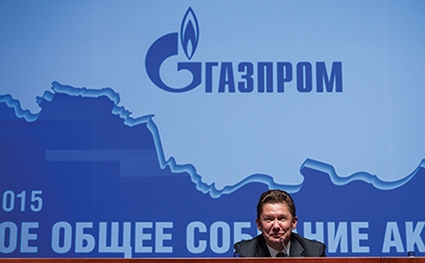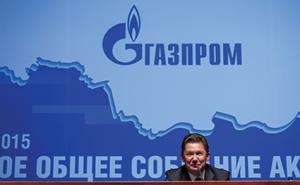Gazprom Sets Record for Russian Gas Export
During 2016 Gazprom supplied European countries with an extra 179 billion cubic meters of gas, 12.5% more than in 2015- a record in the history of the Russian gas industry.
“Gazprom set a new record of gas export to foreign countries,” said head of the company Alexey Miller on January 9.
Compared with the previous year (158.56 billion cubic meters), the export volume of Gazprom in non-CIS countries grew by approximately 12.5% or by 19.9 billion cubic meters. "The record result demonstrates the significant increase in demand for Russian gas in Europe and our ability to ensure that it is exported in the desired volume,” Miller said.
"This is an amount not seen in the Soviet Union, or even in the days of modern Russia," said Miller, noting the growth of supply to Germany and other major gas consumers in Europe.
The total volume of gas in 2016 increased to about 570 million cubic meters and the company, according to Miller, is able to increase production by another 150 billion cubic meters, if necessary.
"We are always working on the market and extracting as much gas as is necessary for consumers," Miller said.
The previous record in gas production was last achieved by Gazprom in 2006, with 556 billion cubic meters. In 2009, production fell to 461.5 billion cubic meters; in 2011, it rose to 513.2 billion cubic meters; went down again, and by 2015 had fallen to 418.5 billion cubic meters.
At the New Year's conference, Miller said there was an increase in gas production by 11 billion cubic meters compared to the plan for 2016 thanks in part to the company's development of new production centers, in particular, on the Yamal Peninsula.
The Yamal Peninsula is located in the Yamal-Nenets autonomous district of northwest Siberia, Russia. It extends roughly 700 km and is bordered principally by the Kara Sea, Baydaratskaya Bay on the west, and by the Gulf of Ob on the east.
"The resource base of Gazprom is gradually shifting to the north,” Miller said. “Russian gas on the map appears as a powerful new gas transportation corridor, a gas supply chain for consumers in the Russian Federation and overseas markets. Of note is the development of the Northern Corridor, consistent creation of new capacity in the northwest of the Unified Gas Supply System - the creation of facilities for the gas supply of the Sea gas pipeline Nord Stream - 2,” Miller said.
Dimitri Dolaberidze












